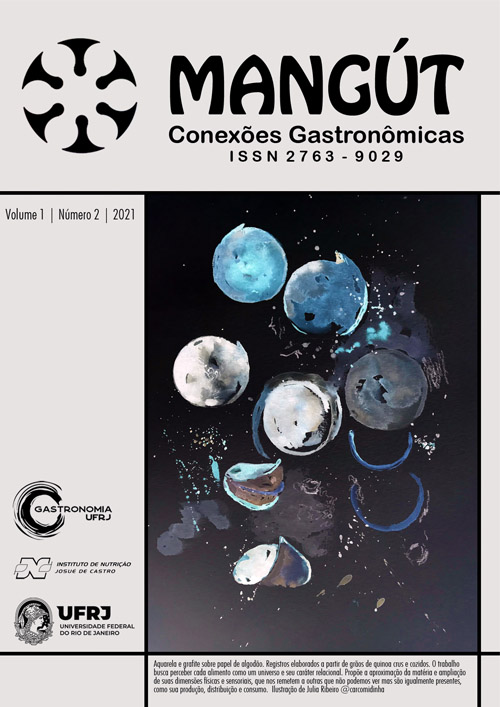Brazilian rapadura mills influence at sítio Moitinga in Ubajara´s gastronomy
Keywords:
Gastronomy, Ibiapaba region, food culture, sugarcane, non-centrifuged sugar,Abstract
Brazilian rapadura production in the Northeast dates from the 16th century. Ceará is one of the biggest rapadura producers. The regions of Cariri and Serra da Ibiapaba stand out for the production of rapadura. Ubajara, a municipality located in the microregion of Ibiapaba, mesoregion of the Northwest of Ceará, Brazil. In this municipality, some rapadura mills are installed at the Sítio Moitinga community. The production of rapadura and derivatives is handcrafted by the families, characterized by the heredity of the production. The rapadura mills drive the local economy. The study analyzed the rapadura food culture in gastronomy and its influence on local food. The research was carried out in two stages: (1) carrying out a historical and cultural survey of the mills in the region, visits to the rapadura producing mills. (2) applying a semi-structured questionnaire to its founders/owners, identifying the food culture and the importance of rapadura and its products for local gastronomy. The study identified the socioeconomic importance of rapadura, culinary preparations and the influence exerted by mills on gastronomy in the community and the municipality.
Downloads
Additional Files
Published
Issue
Section
License
Autores que publicam nesta revista concordam com os seguintes termos:
- Autores mantém os direitos autorais e concedem à revista o direito de primeira publicação, com o trabalho simultaneamente licenciado sob a Licença Creative Commons Attribution que permite o compartilhamento do trabalho com reconhecimento da autoria e publicação inicial nesta revista.
- Autores têm autorização para assumir contratos adicionais separadamente, para distribuição não-exclusiva da versão do trabalho publicada nesta revista (ex.: publicar em repositório institucional ou como capítulo de livro), com reconhecimento de autoria e publicação inicial nesta revista.
- Autores têm permissão e são estimulados a publicar e distribuir seu trabalho online (ex.: em repositórios institucionais ou na sua página pessoal) a qualquer ponto antes ou durante o processo editorial, já que isso pode gerar alterações produtivas, bem como aumentar o impacto e a citação do trabalho publicado (Veja O Efeito do Acesso Livre).



